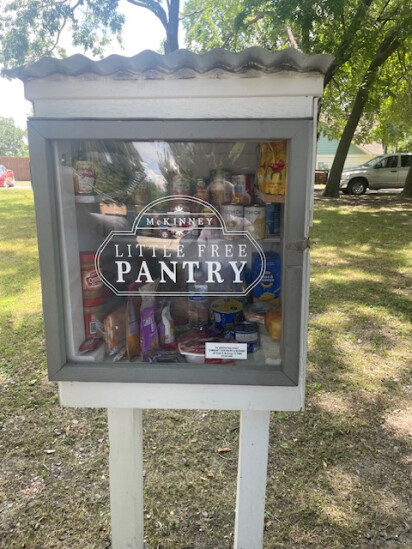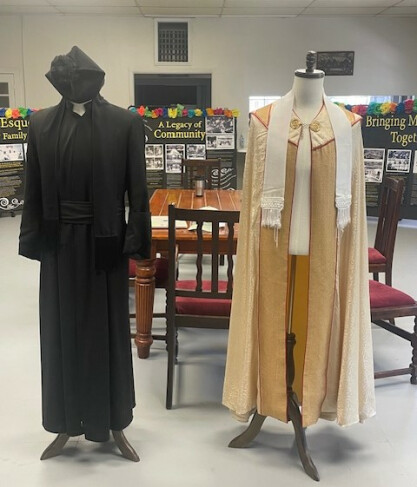Holy Family: Building on the Cornerstone of History

As the city of McKinney has sought to reclaim its heritage with restoration and development of its historic downtown, a few blocks away a small, primarily Hispanic Episcopal church – Church of the Holy Family – has played a major role in the city’s past and is building on that cornerstone to inspire its own revival.
The church began in 1948 when a Roman Catholic priest was sent from Mexico City to establish a church to serve the migrant families that had moved from Mexico to work on farms in the McKinney area. When the priest was recalled, Bishop Charles Mason of the Episcopal Diocese of Dallas seized the opportunity to bring the community of about 50 families into the Anglican communion. He invited Fr. Jose Vega, a former Catholic priest from Mexico City serving in the Diocese of Long Island, to visit McKinney. He was readily accepted and in 1949 he was named Vicar of the Episcopal Church of the Holy Family.

Under Fr. Vega’s leadership Holy Family grew rapidly. In his first year the members built a church building and by 1952 had repaid its loan from the diocese. In his address to the Diocesan Convention that year, Bishop Mason commended the Holy Family saying, “The last $1,000 borrowed from the Revolving Fund was returned with interest, and the Church has been consecrated. Please mark this,” the Bishop emphasized, “the average income per family in that church is $800 a year.”

At the same time, Holy Family Church saw a critical need to focus on its children. In most families both parents worked leaving the children, who did not speak English, in the care of older siblings or relatives. In December of 1950, when a parishioner closed his restaurant, Fr. Vega rented the building for $20 and he and his wife, Maria Louisa, started the Latin American Nursery School. Not only did it provide childcare, but it began teaching the children English and created what is believed to be the first bilingual education program for elementary age children anywhere in the United States.

Though its school, Holy Family became more engaged in the McKinney community creating a “Mexican Fiesta” on the town square at which church families sold food and homemade goods to raise money for the school. Several merchants then began sending food, milk, and essentials like diapers and bottles. Townspeople began volunteering at the school, including the former high school Spanish teacher, Ruth Weeks. After outgrowing its abandoned-restaurant home, the school moved to Doty High School in the mid-1960s after it was closed by the McKinney school system. By the mid-1980s the growth and success of the school necessitated it form its own school board to oversee its curriculum and finances. And, in 2002 the school board, recognizing the contributions the school made to McKinney, named Vega Elementary in honor of Fr. Vega and Maria Louisa.
Today, under the 34 year leadership of Fr. Harold Lowe, Holy Family continues serving McKinney’s Latino community. The church, led by parishioner Andra Nichols, has launched an effort to document its rich history. Supported by a group of parishioners whose parents and grandparents helped start the church, together they have created a multi-media display including historical pictures, 1950s and 60s era movies, and the church’s original vestments. Fr. Lowe and Fr. Noe Mendez last year coordinated the relocation of Iglesia de la Santa Natividad from Plano to McKinney where they share facilities providing three Spanish and Bilingual services on Sundays, and a healing service, and adult formation classes during the week.
“Most inspiring is the reinvigorated enthusiasm of our parishioners,“ Fr. Lowe said. “We are upgrading church worship spaces, offices and fellowship areas. We provide a “Free Little Pantry” to help neighbors facing food insecurity. We are building a vibrant Anglican community serving the Latino community around McKinney.”

